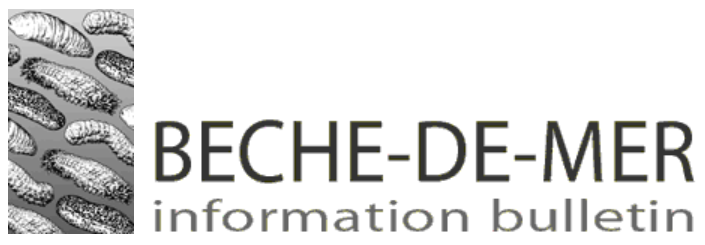
Group Coordinator and Bulletin Editor
Production
Pacific Community, Fisheries Aquaculture and Marine Ecosystems Division, Information Section, SPC, BP D5, 98848 Noumea Cedex, New Caledonia.Note from the co-ordinator
Since the last issue of the Bulletin many new members have joined the SIG. We welcome you and wish that you will contribute to the contents of the next issues by keeping the Group informed of the evolution and changes in the fishing and marketing activities in your country and the latest progress in research developments. Information will so become increasingly accessible, questions will arise and communication will improve.
In the previous issues some aspects of the tropical fisheries of Fiji, Tonga, Papua New Guinea have been presented. In this one recent trends in New Caledonia exploitation are analysed concerning the organisation of the fishery, the catches and the processing. The major point is a change of target species, which is now the black fish Actinopyga miliaris. This change has also been mentioned in Fiji. Did it occur in other countries? When?
Information from Fiji Fisheries Division indicates that some exporters chop the products into small pieces. This could be a way to go around a size limit and will hinder the establishment of statistics by species. It is worth drawing attention to this practice and asking if there are other observations elsewhere and try to quantify these chopped products.
Following the presentation in the last issue on the research conducted on the temperate Stichopus californicus, the dive fishery in the Washington State is analysed here. The measures taken to prevent overfishing could also be useful to manage the tropical fisheries.
In this issue, a summary of a Japanese handbook on Stichopus japonicus biology and propagation provides interesting data on its ecology, natural and artificial seed collection and culture experiments, including survival rates, food and growth rates. For the field studies reliable measures of live specimens are needed; a new technique of measurement is presented here which allows emptying the guts before weighing.
Chantal Conand

